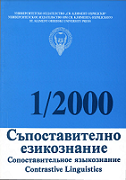
Трета конференция на Комисията по словообразуване в славянските езици (27. IX. - 2. X. 1999; Инсбрук, Австрия)
Date: 27.9. - 2.10.1999; Place: Innsbruck, Austria
More...We kindly inform you that, as long as the subject affiliation of our 300.000+ articles is in progress, you might get unsufficient or no results on your third level or second level search. In this case, please broaden your search criteria.

Date: 27.9. - 2.10.1999; Place: Innsbruck, Austria
More...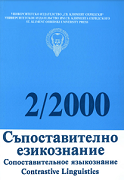
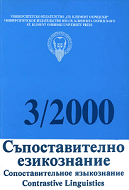
The purpose of this article is to show what changes occur when translating children’s fiction from a formal gender system language into a semantic gender system language and vice versa. Children’s fiction was chosen for the abundance of examples that it provides and for the vividity of those examples. Moreover, in this type of fiction, the presence and the type of gender are often more than significant and so the rendition of one and the same text from one language into another poses interesting and challenging problems for the translator. Now I will briefly present two opinions on the gender systems of languages.
More...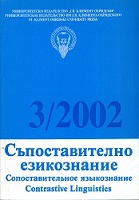
В статията се изследва взаимоотношението между устната и писмената форма на отсечените думи в съвременния френски език. Особено продуктивно поради външни и вътрешноезикови фактори, явлението съкращаване чрез отсичане на част от производната основа е от морфофонологичен характер: то представлява изпускане на една или на поредица от съседни фонеми в цяла дума, обособени или не в сричка и/или морфема, разположени в нейното начало (афереза) или край (апокопа). Точката на отсичане се установява в зависимост от морфологични, фонологични, семантични или икономични критерии. Основаващ се на принципа на езиковата икономия, този словообразувателен похват обаче предполага или включва някои добавки: освен присъщото за всяка отсечена единица конотативно разговорно значение, в някои случаи се наблюдава разширяване на денотативното значение, поява на социална, изказна или асоциативна конотация, както и формални удължения на новата дума (чрез суфиксация, редупликация), които неутрализират постигнатата икономия, но са в унисон с многобройните отредени и функции. Този двоен принцип на изпускане и добавяне се проявява и при писменото означаване на езикови единици от разглеждания вид, където той се вписва в серия от значими взаимодействия между устната и писмената им форма, доказващи съществената роля на последната: поява на нови фонеми, на нови графеми или графически знаци, умело използване едновременно на устния и писмения план на изразяване с игрова цел31. Някои съгласни фонеми от цели думи, послужили за основа на отсичането, се заместват от други вследствие на новата позиция на означаващата ги графема. Наблюдават се и отделни случаи на поява на нови гласни, които могат да бъдат обяснени единствено чрез позоваване на графичното означение на пълната лексема. Още по-разнообразни са измененията в писмената форма на съкратените думи, които налага самото отсичане. Чрез добавяне на апостроф, точка или нямо е се посочва артикулацията на съгласни, озовали се в крайна позиция, в която освен това фонемната реализация, наследена от производната основа, понякога може да бъде необичайна. Графичното окончание на единиците, образувани главно чрез апокопа, може да бъде видоизменено спрямо цялата езикова форма и в други насоки: замяна на етимологична графема с друга, притежаваща по-голяма честота в езика при обозначаването на конкретна фонема; замяна на сложни графеми с прости; вариативност при новата крайна съгласна графема; несъответстващо на френските правописни норми поставяне на ударения след преминаването на гласната затворено е [е] в отворено е [е]. Правописът на отсечените сложни думи показва употреба на съединителна чертица или на главна буква, както и слято писане, чрез които се присъединява съкратената коренна морфема към запазената цяла, се отразява нова сричкова структура или се избягват нетипични графични конфигурации. Статията разкрива, че отсичането на част от производната основа, често затваряно в рамките на устната реч, притежава в съвременния френски език и разгърнато писмено измерение. Редом с влиянието на писмената форма върху фоничното означаващо на отсечените лексеми, езиковите факти свидетелстват и за особено интересно и съзнателно търсене на начини да се изработи графично съответствие на настъпилите при отсичането (главно чрез апокопа) промени във фонемния състав. Като цяло се обособяват две тенденции: добавяне и вариативност, характерна за езикови явления с ненапълно изградени писмени традиции. Анализираният материал дава също така основание да се говори и за процес на “подмладяване” на френския правопис, по правило отразяващ в голяма степен отминали етапи от развитието на езика. Това става възможно чрез подбор на алографи, най-често срещащи се за дадена фонема, чрез опростяване на сложни графеми с премахване на съставящите ги прости без фонемно съответствие, чрез изграждане на допустими графични конфигурации, чрез стремеж към достоверно и еднозначно изписване на устната форма без оглед на етимологията.
More...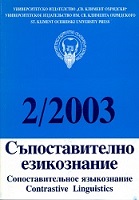
Review of: Д. Митев. Словообразовательная структура и семантика отыменных суффиксальных прилагательных в русском и болгарском языках. Университетско издателство „Епископ Константин Преславски“. Шумен, 2001, 335 стр.
More...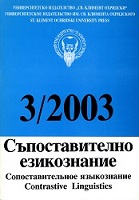

В уводната част на изследването се представят контрастивните изследвания на езиците в контакт, особено на родствените езици. Накратко се проследяват досегашните контрастивни проучвания и контрастивни проекти на хърватския и словенския език. Основната част на труда съдържа контрастивно описание на хърватския и словенския език на следните нива: фонетично-фонологично (системи на вокалите, сонантите, консонантите и ударенията), морфологично ниво (падежи, сравнителна степен на прилагателните, глаголни форми), синтактично ниво (място на енклитиките), лексикално (омоними) и правописно ниво (графемни системи). Близостта между хърватския и словенския език налага подчертано контрастивен подход при изучаването и представянето на езиците (контрастивни таблици); само този подход дава възможност за съзнателно предотвратяване и поправяне на упоритите интерферентни грешки на всички езикови нива. Накрая се привеждат теоретичните и приложните резултати от контрастивните проучвания, които допринасят за по-успешното преподаване/изучаване не само на хърватския и словенския език, но и на други славянски езици.
More...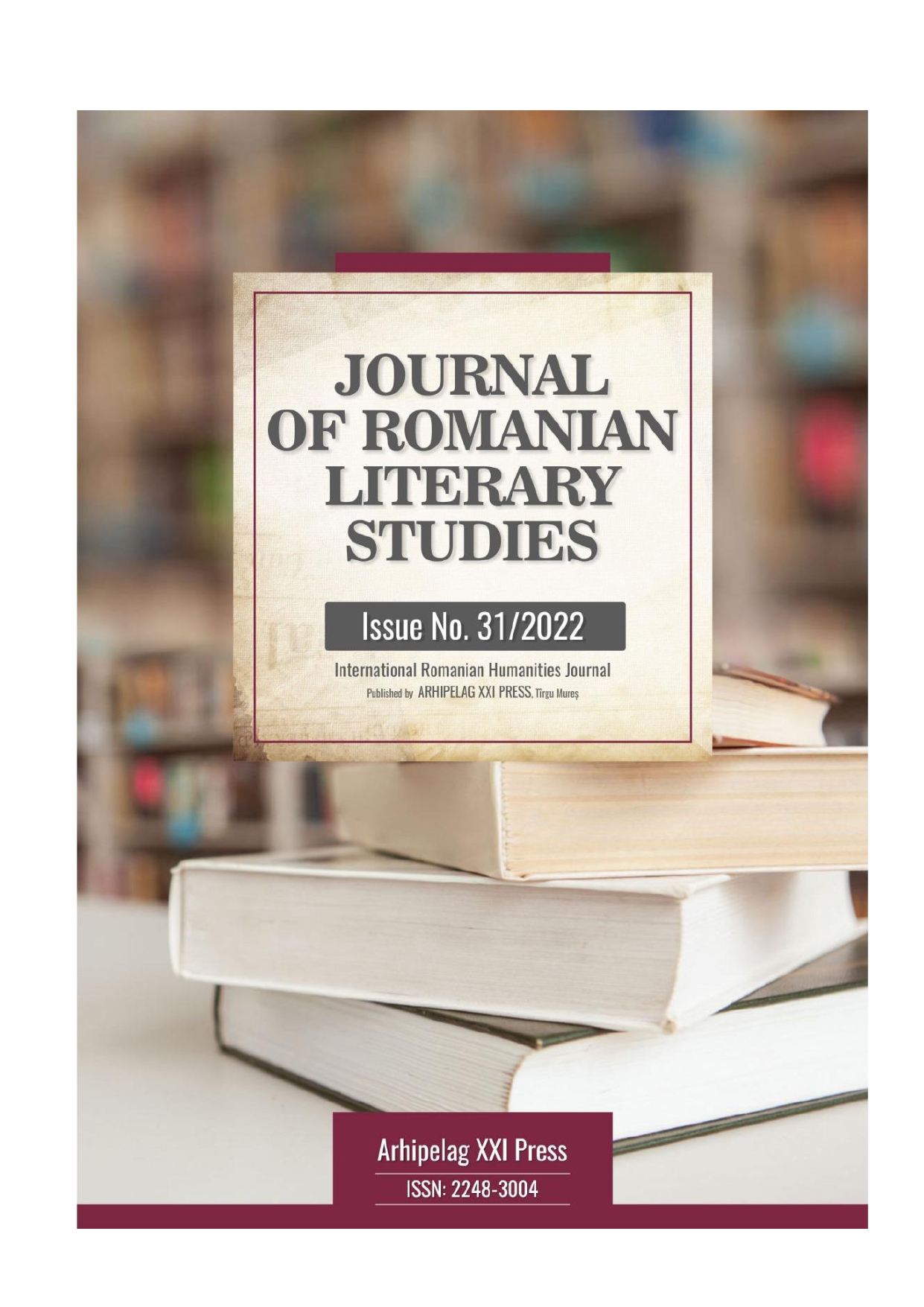
The study explored the dynamics of the mechanisms underlying assertive communication in formative contexts. In particular, it looked to examine the effectiveness of explanatory models in which empathy, honesty and conscientiousness predict dimensions of assertiveness: the discomfort provoked by assertion (DAI) and the likelihood that individuals will use assertive language (RP). Furthermore, the study aimed to identify which of these factors affect to the greatest extent this type of speaking and, also, to investigate the variability of assertive language with respect to gender of participants. 229 participants filled – out Assertion Inventory (AI - Eileen Gambrill, Cherly Richey, 1975), and other self-report measures assessing their empathy (Toronto Empathy Questionnaire - TEQ; Spreng, R. N., McKinnon, M. C., Mar, R. A., Levine, B., 2009), honesty and conscientiousness (Honesty-humility and Conscientiousness scales from the HEXACO Personality Inventory – Ashton and Lee, 2001). The results showed that participants who have higher levels of empathy, honesty and conscientiousness will tend to express lower assertion discomfort. Also, participants who exhibit high levels of empathy, honesty and conscientiousness will be more likely to use assertive language.
More...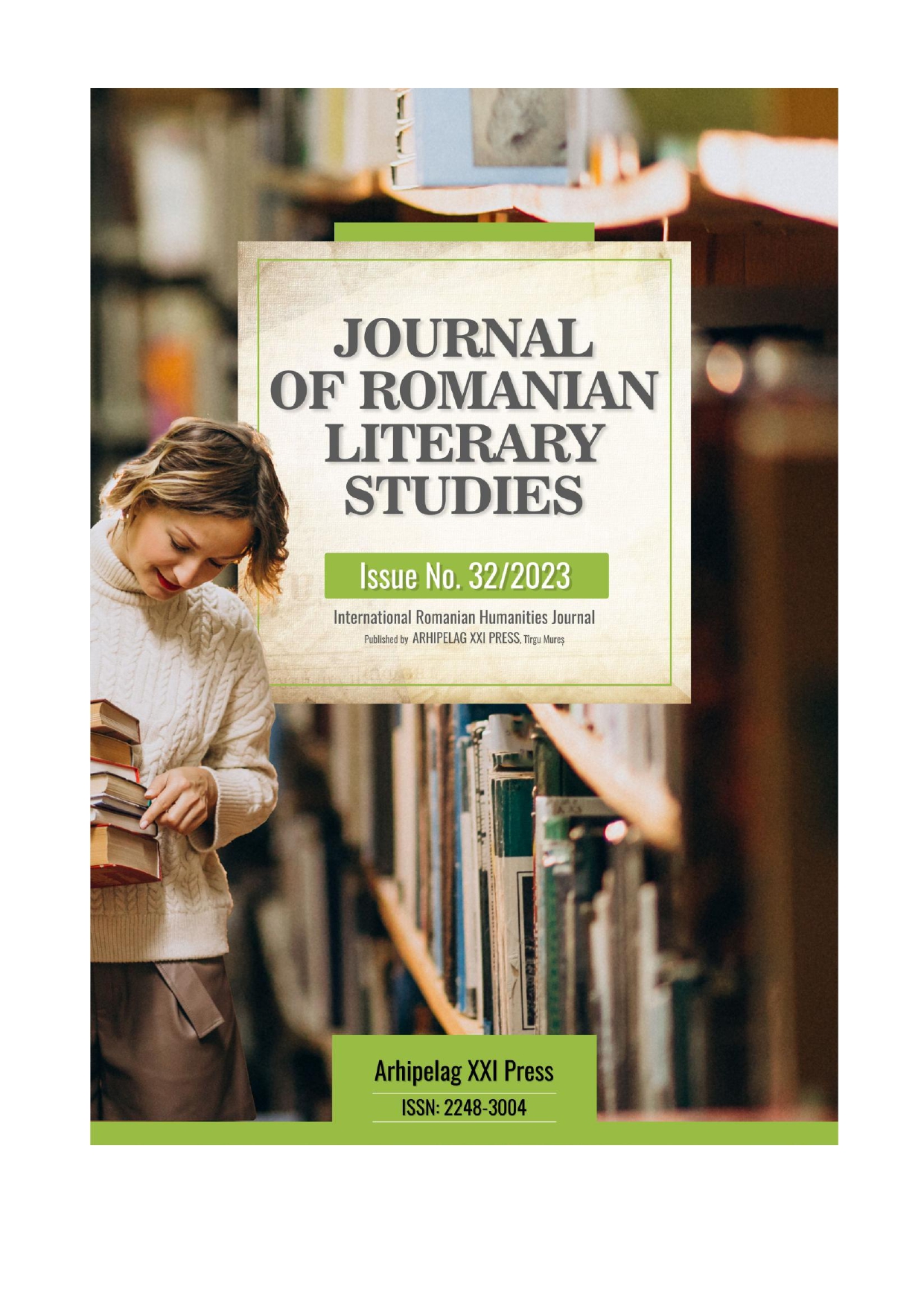
Acquisitional literature defines the stages of language acquisition, their characteristic features and the types of speakers, while highlighting the role of the mother tongue in learning a foreign language. In the case of the acquisition of French, it has been found that the pace is very fast at the basic levels while at the advanced levels, the progression becomes less visible. Studies show that age has an important role, but to this are added the input factor, the properties of the linguistic structures to be acquired, the frequency of occurrence and the typical frequency. Specialists note the difficulty of defining the advanced variety. They propose another category „the quasi-native level”. To establish the characteristic features of the advanced variety, three areas of investigation were established: the fragile areas that reveal grammatical competence, discursive competence and the linguistic competence. By analyzing these aspects in the acquisition of French as a foreign language in children and adults, we wonder about the conditions to be fulfilled for a learner to reach the quasi-native level. Even if the studies speak of a critical age between 4 and 13 years, beyond which the quasi-native stage is no longer accessible, there are many examples that contradict them. Attitude, motivation, cultural representations can facilitate the process or become an obstacle. As perfect linguistic competence does not exist, the opposition native – non-native serves rather to give confidence to natives and to insecure others, while remaining a stereotype categorization, of a social or professional nature.
More...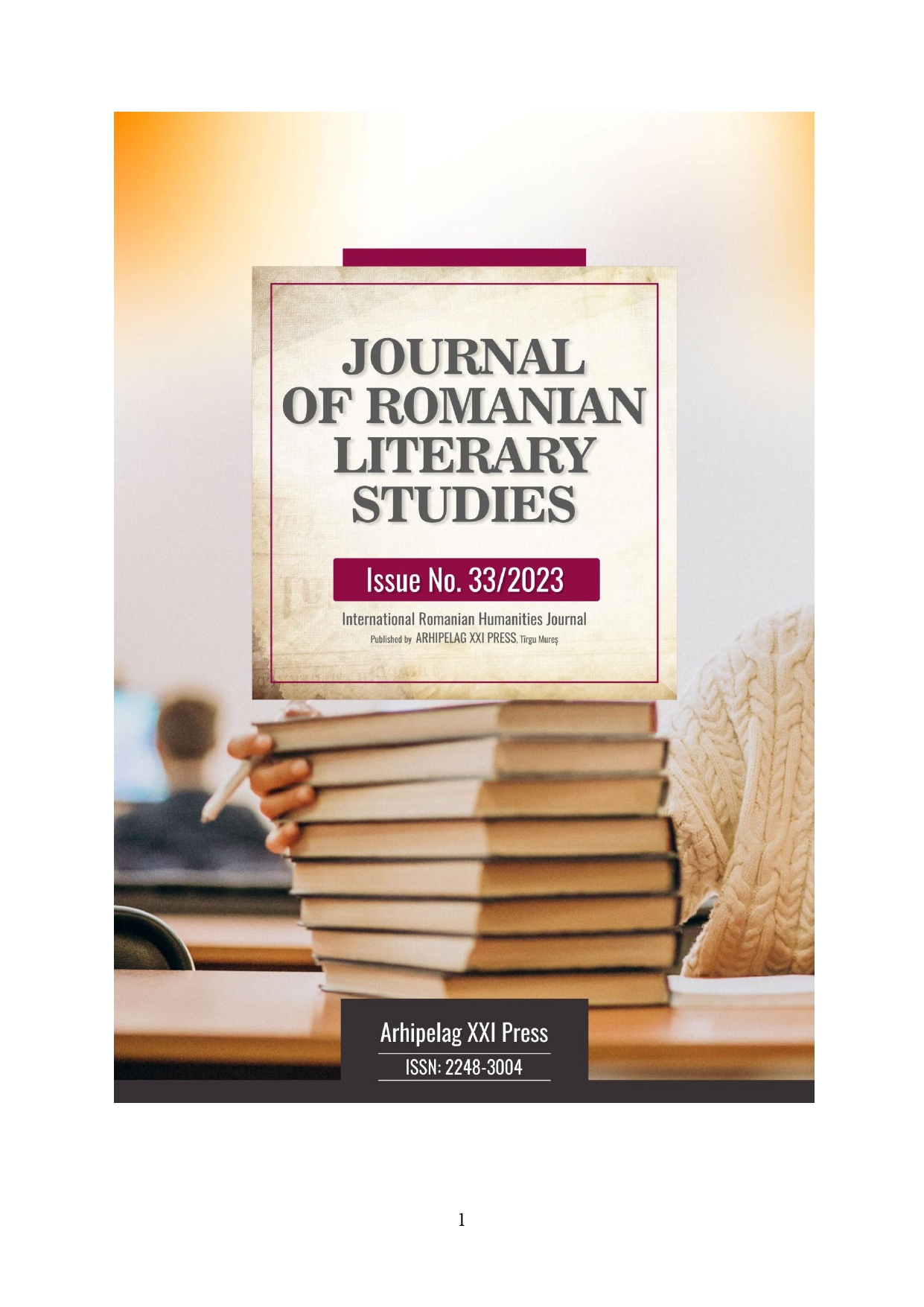
The acquisition of vocabulary by children must be carried out in a favorable climate and in accordance with age and individual characteristics, with the psychological and pedagogical requirements of the activity carried out. Vocabulary development cannot be done without synonymy, which is a complex phenomenon of Romanian language and makes the student to understand a nuanced lexicon. Synonyms, antonyms, homonyms represent active elements that pursue the expressive potential, the ability to specify and the exactness of the meaning. They make it possible to express the most varied nuances of thought. Thanks to synonyms, the speaker has the possibility to choose from two or more words with similar meaning the one most suitable to the situation in which he finds himself, with the intentions of his communication.
More...
The concept of equivalence is one of the most frequently used theoretical terms in the area of translation studies. However, in spite of its being so widely employed, it is still a concept which is rather difficult to pin down and define accurately. While some theoreticians equate equivalence to the practice whereby the target text achieves an identical function to the source text, others speak about the degree of replication of the textual situation in the source text by means of different wording in the target text. Yet other theoreticians talk about the transfer of meaning between source and target text, while others define equivalence as the act of replicating in the target text the most similar natural equivalent of the source language meaning. Last but not least, some theoreticians believe that perfect equivalence does not, in truth, exist. In the present paper we have attempted to reconcile all these diverging views on equivalence, by discussing such concepts as freedom in translation, level, genre, audience, lexicon, hierarchy, ellipsis and compensation.
More...
Pure philosophical and pure poetical the more or less brilliant issue of the category in the vision of the Romanian writer Lucian Blaga is endowed with the capability to acquire multitude of new functions – this central point of the research, the category – reverberates also on the metaphorism and on the revelatory metaphor as ontological gift, and is observed in parallel with perspectives of forerunners particularly from the philosophical point of view. The argumentation entails some results concerning the language as special category named Quality of the human mind, alongside with its Poetical Function super-structure.
More...
Starting from the users’ exposure to proverbs in both Romanian and English languages, I am going to analyse the Romanian and English communities’ members’ reactions to possible similarities as well as to cultural differences. Do proverbs shed light on cultural aspects? Do proverbs promote a new understanding of communities values and preferences? Using the thematic approach and underlining the pragmatic signification of the philosophical and the cultural levels, when referring to man and woman within proverbs, we want to prove how much languages and cultures – even if they do not share common roots – are entwined and may display common elements. Differences at the language level might make people have different worldviews. Social life determines people’s relationships and the way culture is learned. Proverbs are rich in connotative meanings and the translator’s work should be carefully done, being aware of the concepts in both source language (SL) and target language (TL).
More...
The chapters entitled The Rights of Romanians to the High Porte and Collective Works and Official Acts during the 1848 Revolution, published in the first volume of Nicolae Balcescu's work, Historical, Political and Economic Writings, provide us with valuable information about the configuration of the literary Romanian language in Wallachia between 1780 and 1860, about the influence of Latin-Romance borrowings on the Romanian lexicon, and about the development and modernization of the legal- administrative style. The legal-administrative style appears as a variant of the language and reflects the relationship between the citizen and public institutions, its specific terminology comprising both words from the common language and strictly specialized words, which individualize this specialized language: abuse, administrator, assembly, voters, elections, ruler, commission, decree, delegate, deputy, magistrate, servant "official".
More...
The first decades of the 19th century are characterized both by the unification and modernization of the literary Romanian language and by the enrichment of the lexicon with words from Romance languages. The explosive development of science and technology in the modern era, the growth of inter-cultural exchanges and the accumulation of knowledge in various special fields led to the emergence and development of Romanian scientific terminology. Bălcescu participated in the process of creating, enriching and perfecting specialist terminology in several fields of science: socio-politics, history, religion, economics, by introducing into his writings a large number of terms borrowed from Latin-Romance languages, but also by creating new words, through the process of linguistic calque. In order to contribute to the understanding and understanding of certain specialist terms, the writer resorted to glossing them, explaining them in periphrases or familiar words. In the process of specialising terms, some words change their meaning and become fixed in socio-political terminology with the meaning they will retain to this day. Thus, 'elect' evolves from the meaning 'to accept' to today's meaning - 'to designate by vote'. Through his constant activity and the variety of topics he dealt with, it can be said that Nicolae Bălcescu contributed to the evolution of socio-political terminology in Romanian.
More...
The evolution of ideas and facts in library science is due, as in other fields, to some personalities, because a field cannot exist in time if it does not have behind it those pillars on which a vocabulary or terminological language can be created. The terms from the biblio-economic lexicon are grouped into lexical systems, isolated from the words from the common lexicon, and are correlated with other objectual-notional fields. The article presents an analysis of the structure of the terms in the field of Romanian library terminology is generally mentioned as one of the main methods of researching terms in linguistics. Insights derived from statistical accounts of a domain's vocabulary can be useful in solving and clarifying specific qualitative and quantitative problems regarding language use. In the linguistic research regarding the library terminology, we rely on the information extracted from specialized publications, the research is about the 17452 grammatical terms and phrases.
More...
The article addresses to romanian biblical scholars preoccupied with the history of biblical translations. We search for the biblical sources (editions and critical editions) of „Anania” translation of the Sacred Text in order to establish the dependence of the authorized versions in Europe and America. The most common francophone editions used by translator was the following: La Bible de Jérusalem (Paris, 1973); La Bible. Traduction Oecuménique (Paris, 1978); La Bible. Traduction par Émile Osty (Paris, 1973). We identify La Bible. Traduction Oecuménique (TOB) as the key one. The most common Anglophone editions used by translator was the following: The Holy Bible. King James Authorized Version (Oxford, 1977); The New Oxford Annotated Bible (Oxford, 1977); Good News Bible (New York, 1978) – with the preeminence of KJV edition. These two biblical translations (TOB and KJV) influenced the Romanian translator in his entire process of translating the original Greek text.
More...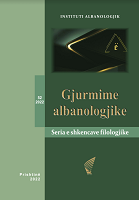
Sivjet është 100-vjetori i lindjes së gjuhëtarit austriak Hermann Ölberg, një vijues i shquar i shkollës albanologjike të Austrisë, ku spikatin emra të mirënjohur si Johann Georg von Hahn, Gustav Meyer, Franz Miklosich, Norbert Jokl, Rajko Nahtigal, Maximilian Lambertz, dhe që vijon edhe sot me studiues të rinj në fusha të ndryshme të studimeve albanologjike. H. Ölberg-u kishte studiuar për gjuhësi indoeuropiane në Universitetin e Innsbrukut, ku zhvilloi më pas gjithë veprimtarinë e tij mësimore e shkencore, në fillim si lektor i gjuhës esperanto (1953), pastaj pedagog i sllavishtes së vjetër kishtare (1963), ndërsa më 1972 docent dhe prej vitit 1975 profesor i gjuhësisë së përgjithshme dhe të zbatuar, derisa doli në pension (1987). Si studiues dhe profesor ai ishte përpjekur të zgjeronte rrethin e kërkimeve me tema e drejtime të reja, të bashkëpunonte me specialistë të disiplinave të ndryshme të gjuhësisë dhe të kombinonte trajtimet gjuhësore me vështrime historike e kulturore, duke hyrë në një shkëmbim të frytshëm e të shumanshëm idesh e metodash. H. Ölberg-u jetoi gjatë, 95 vjet (u nda nga jeta më 25 shkurt 2017), por mjerisht vitet e fundit i kaloi në trishtim, pasi humbi dritën e syve.
More...
Çdo gjuhë standarde ka historinë e saj, të tashmen e saj, por ka edhe të ardhmen e saj. Zhvillimi i gjuhës letrare shqipe është i shënuar me një histori të gjatë përpjekjesh, vështirësish, pengesash e veprimtarish të shumta e sakrifikuese të atdhetarëve, veprimtarëve e zelltarëve tanë gjuhësorë, letrarë e kulturorë edhe përmes një procesi të gjatë standardizues që u intensifikua sidomos në gjysmën e dytë të shekullit XIX në kohën e Rilindjes Kombëtare për të vazhduar përgjatë shekullit XX deri në vitin 1972 kur përfundimisht u ligjësua në pikëpamje shoqërore, politike, kulturore por në rend të parë shkencore Kongresi i Drejtshkrimit i Gjuhës Shqipe dhe i gjuhës së përbashkët letrare që po mbush 5 dhjetëvjetëshat e vet pikërisht këto ditë kur po mbahen edhe aktivitete të shumta shënuese në Tiranë, Prishtinë, Shkup e më gjerë. Jo vetëm në historinë tonë kulturore, por edhe në historitë kulturore të Ballkanit e përtej tij, proceset standardizuese gjuhësore, më herët ose më vonë ose shumë më vonë, gjithmonë janë nxitur nga idetë e ndërgjegjes kombëtare dhe nga ndjenjat e për katësisë kombëtare. Dhe këto ide janë bërë forcë lëvizëse në historinë e një populli siç janë bërë edhe në historinë e popullit shqiptar.
More...
Në korrik 1949, kur kishte dorëzuar në Institut dorëshkrimin e veprës “Gramatika”, K. Cipoja botoi në shtyp skicën “Gjuhë dhe gramatikë”1 , në të cilën njofton lexuesit paraprakisht për përmbajtjen e veprës dhe shpreh idetë e tij për gjuhën letrare dhe për atë që quhet sot planifikim gjuhësor. Këto ide është mirë të dihen e të mbahen parasysh jo vetëm për hir të historisë së mendimit tonë gjuhësor, por edhe për të gjykuar më kthjellët edhe në diskutimet e sotme, pasi janë mendime e ide që i ka bluar e përbluar në mendje një gjuhëtar si K. Cipoja, i cili ndërtoi veprat themelore normative (ose preceptive 2 , siç e përdor ai) të gjuhës sonë në mesin e shekullit të kaluar dhe i dha një drejtim të mbarë në përgjithësi punës në këtë fushë. Le ta dëgjojmë: “Kur thomi “gjuhë letrare” kuptojmë me këto dy fjalë gjuhën e literatyrës dhe të kulturës, një tip gjuhe që ka qenë dialekt në krye, po erth e u bë me kohë kombëtar për hir të proçesit të çkrahinarizimit dhe të përgjithësimit. Pa një proçes të tillë s’ka të folur që t’arrinjë tipin e një idiome letrare. Po a kemi ne sot një kësi dialekti të xhveshur nga krahinarizmat dhe të pajisur me tiparet fonetike dhe morfologjike të përbashkëta me tërë krahinat e mëmëdheut? ….
More...